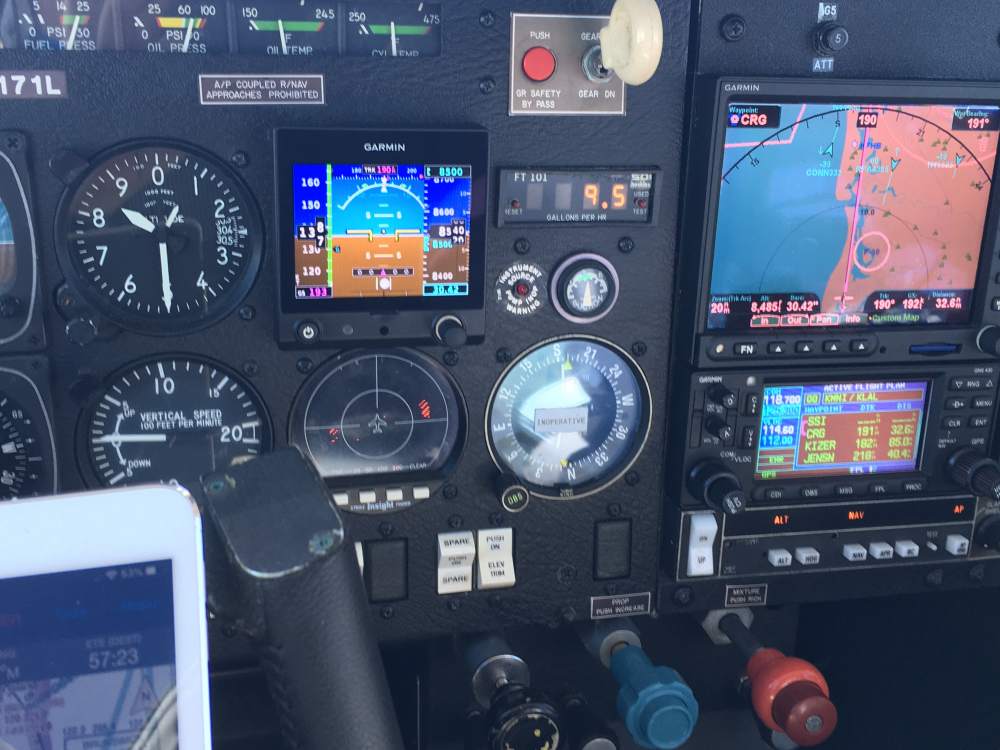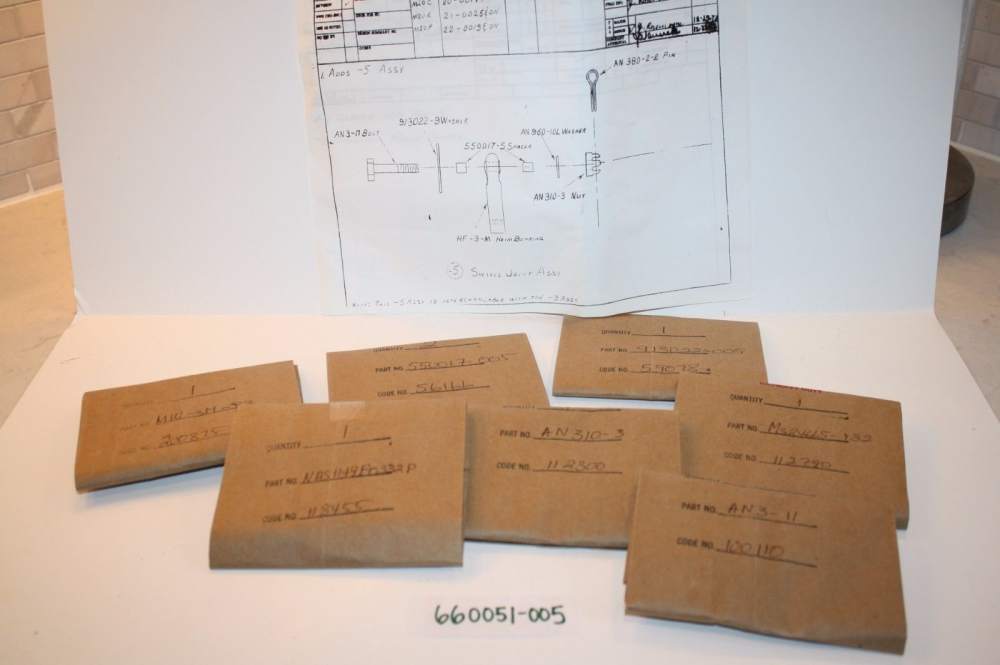skykrawler
Supporter-
Posts
540 -
Joined
-
Last visited
Content Type
Profiles
Forums
Blogs
Gallery
Downloads
Media Demo
Events
Everything posted by skykrawler
-
I'd like to know if anybody has experience with using Airtex on the the articulating J model seats. In the front these seats have a solid pan and the upholstery on the seat cushion is held on with U shaped plastic clips. No glue or hog rings. The seat back is probably glued on the back before the trim - haven't had that off.
-
I didn't really offer as advice, just what I do. My thinking is down low the %hp is higher and I want to avoid the critical pressures. At higher altitudes the %hp is lower and its unlikely to end up where you can hurt the engine. I rarely cruise low unless its a short trip and the winds are miserable (recent 100nm excursion was 30+kt headwind above 2500). My engine monitor is older and doesn't have the digital values, just the bars. The true airspeed can be computed from the picture.
-
Weight Reduction by removing vacuum system?
skykrawler replied to hubcap's topic in Modern Mooney Discussion
Regarding AI separate breaker...... This is why I suggested killing the G600 IMU. A vacuum indicator won't have a separate breaker - it gets power from the autopilot circuit breaker. I think the G600 does require a backup attitude indicator (just like an Aspen). Removing the vacuum will save very little weight and will cost even more to replace, your aircraft will be down while its being done and the work might introduce problems. -
When travelling I use 22" and 2400 - to lower the noise. ROP 10.o down low. Peak or LOP up high. Of course at altitude this is WOT. If the temps climb I richen. Down low this nets ~148kts, increasing to 150 to 155 up high. Fly high to stay away from the Indians.
-
Weight Reduction by removing vacuum system?
skykrawler replied to hubcap's topic in Modern Mooney Discussion
That is a sweet setup. It seems optimally the G600 should be integrated with the autopilot and its seems unlikely that someone would spend that much money and not have that done. One way to tell if, the 337, doesn't say is on a nice VFR day, pull the breaker on the the GRS77 or solid state AHRS while the autopilot is engaged. If the autopilot disconnects it seems likely the vacuum ADI is no longer required for the autopilot. The next question is: does the G600 require a backup attitude indicator? I read it doesn't have a battery backup for when the alternator fails. There are others that have these systems better prepared to answer this question. You could gain a few pound in useful load having the stuff removed and lose a few pounds out of your wallet. -
Weight Reduction by removing vacuum system?
skykrawler replied to hubcap's topic in Modern Mooney Discussion
Does your autopilot require signals from the attitude gyro? If you have a King AP it might. -
Look at the assembly carefully and compare to the parts diagram explossion. Perhaps it was re-assembled incorrectly placing side loads on the bracket. Does seem like a control system failure. Ill be checking mine tomorrow.
-
six gear collapses & gear ups in one week
skykrawler replied to philiplane's topic in Mooney Safety & Accident Discussion
Is this one of those Johnson Bar models? 1969 http://www.kathrynsreport.com/2021/01/mooney-m20e-n9253v-incidents-occurred.html Two incidents in less than a year? -
The DA-40 I flew some had a stall warning port cover that wrapped around the leading edge of the wing and stuck to the top of the wing with a suction cup. You could see it from the cabin. If you put a big enough flag on it you could take off and the airflow would pull the cover off
-
Annuals are inspections.......maintenance may be performed because it is convenient. If your airplane is two states away you might be 'held hostage' for unneeded repairs which could be deferred and performed locally or supervised. The hardest thing to do on an M20J annual is to safety the oil screen Maintain your own list of ADs. One time and recurrent, on the airframe, engine AND accessories. Its the only way you really know. Remember that everything "worked on" is a potential point of a new failure or problem. IF you take an airplane to a FAA repair station it might be a 'tougher' annual because the FAA watches them closely. And, not sure FAA repair stations actually have to use A&Ps. The IA sign off is against the repair station certificate. I'm sure to be corrected here.
-
Your stack and muffler both need to be 'rebuilt' or replaced. Inspect the other three very carefully. Go with the no-blow gaskets.
-
Its a little disingenuous to title this event 'loss of airspeed indicator ...on GI 275'. That is not what happened and this title will get web search hits. The OP proceeded to take off without an indication of proper flying airspeed - what he should have done was abort. On a twin you wouldn't leave the ground until above Vmc because you would likely lose your life if an engine failed. Strike 1 - forgot the pitot cover Strike 2 - take off without proper airspeed indication Strike 3 ???? The 23 kts in not an erroneous reading. It is the threshold Garmin decided was a useable value from the sensor. Air Data Computers on 'big iron' often don't indicate until above 25 or 30 kts (on the digital data bus the signal status is marked NCD - no computed data).
-
So... M20E is not useful info. When you fly an RNAV - must have LPV or LNAV with vertical 'advice' - does the autopilot couple to the VNAV guidance? Normally the 430W switches the analog loc/gs outputs from radio to GPS based with LOC/GPS selection, right? Check your 430W setup. From EFD1000 install manual: GNS-430/530(W) & GPS-400/500(W) MAIN ARINC 429 CONFIG Page IN 1 LOW Honeywell EFIS (when using pins 48/49) or EFIS or EFIS/ADC* IN 2 As required OUT LOW(2) GAMA 429 Graphics w/INTSDI See Note 1 VNAV ENABLE LABELS (W models only) VOR/LOC/GS ARINC 429 CONFIG Page SPEED LOW(2) RX LOW(2) TX SDI COMMON * Note – Some GPS units require the EFIS config. ACU2 installs can use the EFIS/ADC config.
-
Your description make it difficult to troubleshoot. What kind of audio panel? It sounds like your system is not charging correctly based on the JPI indicating 13.1volts. The system can't charge with the field switch off and you say the voltage went up with the field off. It might do that with engine not running. With the engine running the system should be making a more like 13.8 volts. What did your voltage run before the engine was overhauled? Diode is definite possibility. Your mechanic doesn't know how to troubleshoot alternator systems - make sure you keep the old regulator as it is likely still good. The alternator should still be under warranty.
-
Any thoughts about continuing IFR flight with IMC for over two hours after an electrical failure doesn't seem wise. Now.....I realize there is always special circumstances, but for most flights there is a close enough airport. Even if your EADI continued to run, the main battery will run down and now no radio, transponder or ADS-B.
-
My 1982 J has a vacuum failure light on the annunciator panel. There is also a gauge. My recent pump failure (also on a +30 year old pump!) was detected before the gyro spun down and the KAP-150 AP disconnected. The failure was not the vanes in the pump, it was the frangible plastic coupler in the drive. Had a recent oil seal replacement on the acc drive shaft. I previously removed the Precise Flight standby (manifold) to eliminate the AD hassle and installed a G5 for a proper secondary. It important to know the systems on your particular airplane - how else can you understand the consequences of failures?
-
Once those clamps have been pried open a couple of time they lose their shape. Also.....the clamp required for the OEM cable may be different than the McFarlane that you now have. Measure the cable at the attach point with a caliper to make sure -5 is correct size (5/16 inch I think). No rocket science here. https://military-fasteners.com/clamps/loop+clamps/AN742-5
-
Ovation yoke auto pilot and trim cap
skykrawler replied to bg8810's topic in Avionics/Panel Discussion
I think the OP misspoke when he referred to the "trim switch" and what he meant was the mount broke. Honeywell should be ashamed for the price of this poorly designed piece of plastic - that is also hard to get OEM. I too have read the advice to not use the red disconnect button but not because it will break off in your hand. If it broke off in your hand it would seem likely there would be an AD or a bulletin. The reasoning is (on Bendix/King systems) the power for the clutch in the trim servo supposedly passes through the switch and the contacts eventually burn causing the switch to fail. The same power path goes through the left trim switch so instead you are 'burning' that, which buy the way operates the clutch every time the electric trim is used. These switches are even more costly to replace than the disconnect switch. So the advice is to use the AP engage/disengage button which causes the disconnect using logic rather than a higher current loaded switch. -
231 Down in North Georgia pasture
skykrawler replied to Heidiho's topic in Mooney Safety & Accident Discussion
Insurance is a requirement in the state of Virginia. -
231 Down in North Georgia pasture
skykrawler replied to Heidiho's topic in Mooney Safety & Accident Discussion
Don't think that is true. -
231 Down in North Georgia pasture
skykrawler replied to Heidiho's topic in Mooney Safety & Accident Discussion
Why don't insurance companies write policies that say if you run the aircraft out of fuel (absent any leakage issue) that they do not pay? -
Ovation yoke auto pilot and trim cap
skykrawler replied to bg8810's topic in Avionics/Panel Discussion
Print one from this: https://www.thingiverse.com/thing:4340751?fbclid=IwAR0hp_BCv5a2J7wdQ0C7Rrwby8H5xtcYPYq9_SfePgbqErQjAB8obOXIaYQ -
A 750 to 800 rpm idle is too high IMHO. Needs to be 550 to 650. I replaced the original control cable rod ends with spherical bearing joints. The hole had elongated on original cheap ball/socket joint (which was 36 years old) would bind sometimes and prevent the controls from reaching the closed stop. The was a problem on both the mixture and the throttle. The parts are available in a kit, but you can buy them from separately from Spruce.
-
You also find out if there have been any liens that have not been cleared, all ownership changes and registrations.




